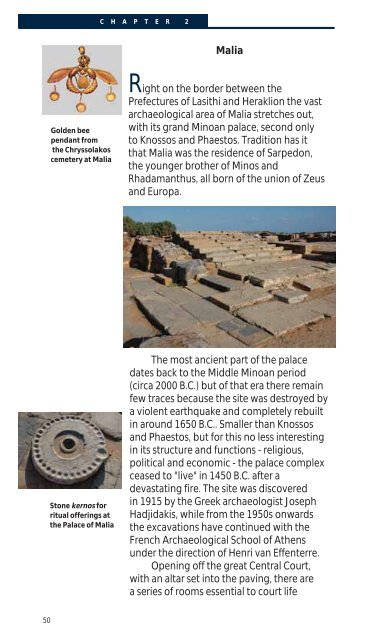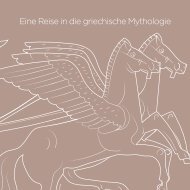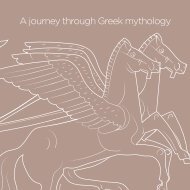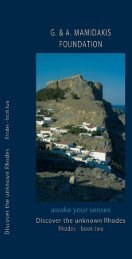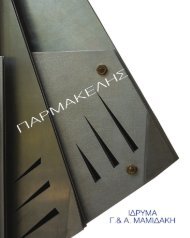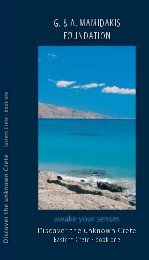Crete-Discover the Unknown Crete
Ένας πλούσια εικονογραφημένος, πρακτικός οδηγός που αναδεικνύει περισσότερο ή λιγότερο άγνωστα σημεία και αξιοθέατα της ανατολικής Κρήτης. Με το βιβλίο αυτό ανά χείρας, ο επισκέπτης έχει την ευκαιρία να επισκεφθεί αρχαιολογικούς χώρους, μοναστήρια, χωριά και φαράγγια και να πάρει μια πιο αυθεντική γεύση της σχετικά ανεξερεύνητης αυτής πλευράς της Κρήτης. Κείμενα: Judith Lange Φωτογραφία: Judith Lange, Μαρία Στέφωση Σχεδιασμός και καλλιτεχνική επιμέλεια: Μαρία Στέφωση Μετάφραση: Julia MacGibbon Επιμέλεια δοκιμίων: John o'Shea Εκτύπωση και βιβλιοδεσία: Γραφικές Τέχνες Δετοράκης ΑΕΒΕ ISBN: 978-960-98384-3-6
Ένας πλούσια εικονογραφημένος, πρακτικός οδηγός που αναδεικνύει περισσότερο ή λιγότερο άγνωστα σημεία και αξιοθέατα της ανατολικής Κρήτης. Με το βιβλίο αυτό ανά χείρας, ο επισκέπτης έχει την ευκαιρία να επισκεφθεί αρχαιολογικούς χώρους, μοναστήρια, χωριά και φαράγγια και να πάρει μια πιο αυθεντική γεύση της σχετικά ανεξερεύνητης αυτής πλευράς της Κρήτης.
Κείμενα: Judith Lange
Φωτογραφία: Judith Lange, Μαρία Στέφωση
Σχεδιασμός και καλλιτεχνική επιμέλεια: Μαρία Στέφωση
Μετάφραση: Julia MacGibbon
Επιμέλεια δοκιμίων: John o'Shea
Εκτύπωση και βιβλιοδεσία: Γραφικές Τέχνες Δετοράκης ΑΕΒΕ
ISBN: 978-960-98384-3-6
Create successful ePaper yourself
Turn your PDF publications into a flip-book with our unique Google optimized e-Paper software.
C H A P T E R 2<br />
Malia<br />
Golden bee<br />
pendant from<br />
<strong>the</strong> Chryssolakos<br />
cemetery at Malia<br />
Right on <strong>the</strong> border between <strong>the</strong><br />
Prefectures of Lasithi and Heraklion <strong>the</strong> vast<br />
archaeological area of Malia stretches out,<br />
with its grand Minoan palace, second only<br />
to Knossos and Phaestos. Tradition has it<br />
that Malia was <strong>the</strong> residence of Sarpedon,<br />
<strong>the</strong> younger bro<strong>the</strong>r of Minos and<br />
Rhadamanthus, all born of <strong>the</strong> union of Zeus<br />
and Europa.<br />
Stone kernos for<br />
ritual offerings at<br />
<strong>the</strong> Palace of Malia<br />
The most ancient part of <strong>the</strong> palace<br />
dates back to <strong>the</strong> Middle Minoan period<br />
(circa 2000 B.C.) but of that era <strong>the</strong>re remain<br />
few traces because <strong>the</strong> site was destroyed by<br />
a violent earthquake and completely rebuilt<br />
in around 1650 B.C.. Smaller than Knossos<br />
and Phaestos, but for this no less interesting<br />
in its structure and functions - religious,<br />
political and economic - <strong>the</strong> palace complex<br />
ceased to "live" in 1450 B.C. after a<br />
devastating fire. The site was discovered<br />
in 1915 by <strong>the</strong> Greek archaeologist Joseph<br />
Hadjidakis, while from <strong>the</strong> 1950s onwards<br />
<strong>the</strong> excavations have continued with <strong>the</strong><br />
French Archaeological School of A<strong>the</strong>ns<br />
under <strong>the</strong> direction of Henri van Effenterre.<br />
Opening off <strong>the</strong> great Central Court,<br />
with an altar set into <strong>the</strong> paving, <strong>the</strong>re are<br />
a series of rooms essential to court life<br />
50


